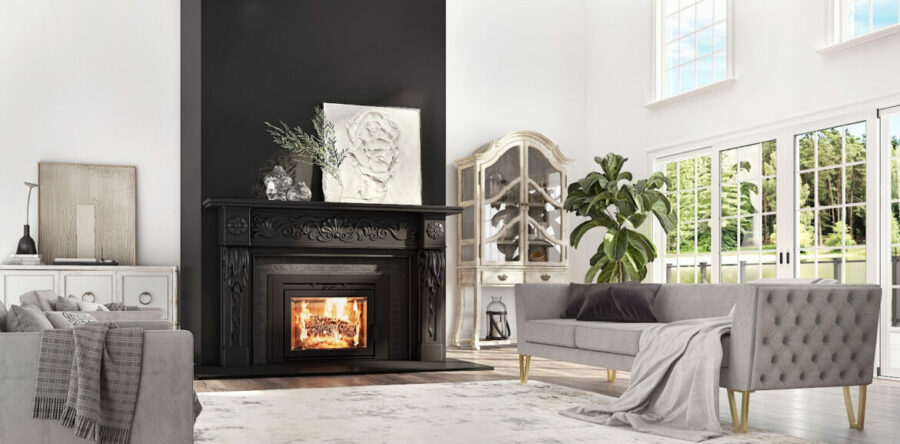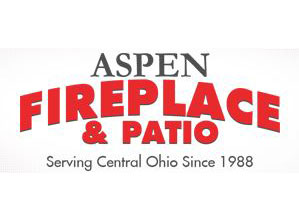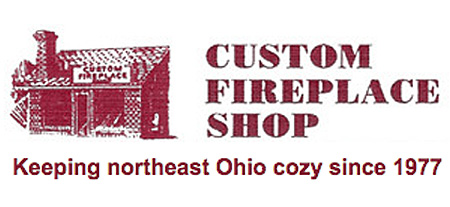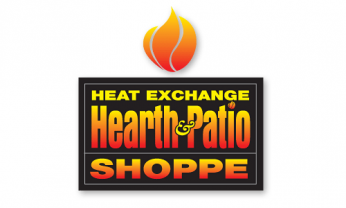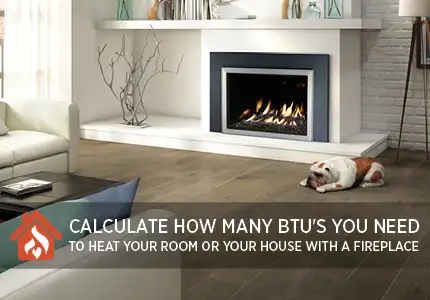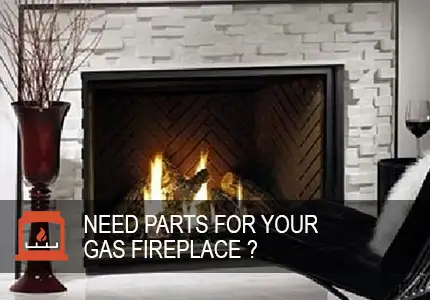There are two types of wood burning fireplaces: masonry and zero-clearance (or factory built) models. How they are built and the components used during installation are different, but the principles of how they work is the same. So, let’s discuss the basics of how a wood burning fireplace operates.
THE MOST IMPORTANT DETAIL!
Combustion air, firebox size, equipment design and chimney height are all critical when it comes to burning wood in your fireplace. But the #1, most important detail is burning D-R-Y wood. Wood needs to be cut, split, stacked, covered from the rain and snow and left to air dry for a year. The moisture content of the wood you burn in your fireplace should be below 25%. The best practice is to get a year ahead on your wood supply. Wood cut, split and stacked this year, should be ready to burn next year. Burning dry wood in your fireplace will provide you with more heat and less smoke (creosote) out your chimney. Your routine maintenance will be easier and quicker, too!
THE CHIMNEY’S ROLE:
It’s been said that a chimney is the engine that powers a fireplace. Without an engine in your vehicle, you’re going nowhere, fast! With an inadequate engine or an under-powered one, you’re going to be frustrated and dissatisfied. Let’s understand how this analogy relates to the basic functions of a fireplace chimney.
There is a difference in air pressure from the firebox, (that is, where the actual fire is burning) and the top of the chimney. The warm air from the fire and this difference in air pressure creates air moving up the chimney. This ‘draft’ as it’s called, pulls the unburned by-products of combustion (the smoke) out of the fireplace.
AIR FOR COMBUSTION
The air that’s moving up the chimney is replaced by combustion air. Fireplaces have primary air controls that allows a specific amount of oxygen to get to the fire for combustion. If you remember your school science classes, you’ll recall that three things are necessary for fire to occur: fuel, an ignition source and oxygen. By allowing a lot of air to the fire, you’ll get livelier flames, a hotter fire, more heat and shorter burn times from a load of wood. Reducing the amount of combustion air will result in lazier flames, less heat and longer burner times for the wood.
Other items that will affect the engine for your fireplace are environmental conditions, poor maintenance, improper installation, air supply and atmospheric pressure. Environmental factors often have an effect on performance, too. Trees, adjacent structures, a house in a low-lying valley, extremely high wind conditions and bitterly cold temperatures often cause havoc in establishing a draft for a fireplace.
OTHER CHIMNEY CONSIDERATIONS:
The height of the chimney is important. If the chimney is too short, the draft will be difficult to establish. Too tall and there will be too much air moving through the chimney. The velocity of the draft could create excessively high temperatures and greatly reduce the burn times on a load of wood. Depending on the type of fireplace, most acceptable minimum heights for chimneys are around 12 – 15’ while the maximum height is usually in the range of 35 – 45’.
Consider the size, or the inside dimension of the chimney. Too small and the volume of air moving through the chimney may cause smoke to back up into the house. Too large, and the smoke may spend too much time in the chimney leading to lower draft temperatures and creosote forming.
Chimneys must extend up above the roof. They cannot be horizontally vented through a sidewall like a direct vent gas fireplace. Even on a flat roof, codes require at least 3 feet (0.91 m) of chimney above the roof. Since most roofs are pitched, the code also states a chimney must be two feet higher than anything measured within 10 feet (3.05 m) of it. Chimney sizing charts and extensive information are provided online.
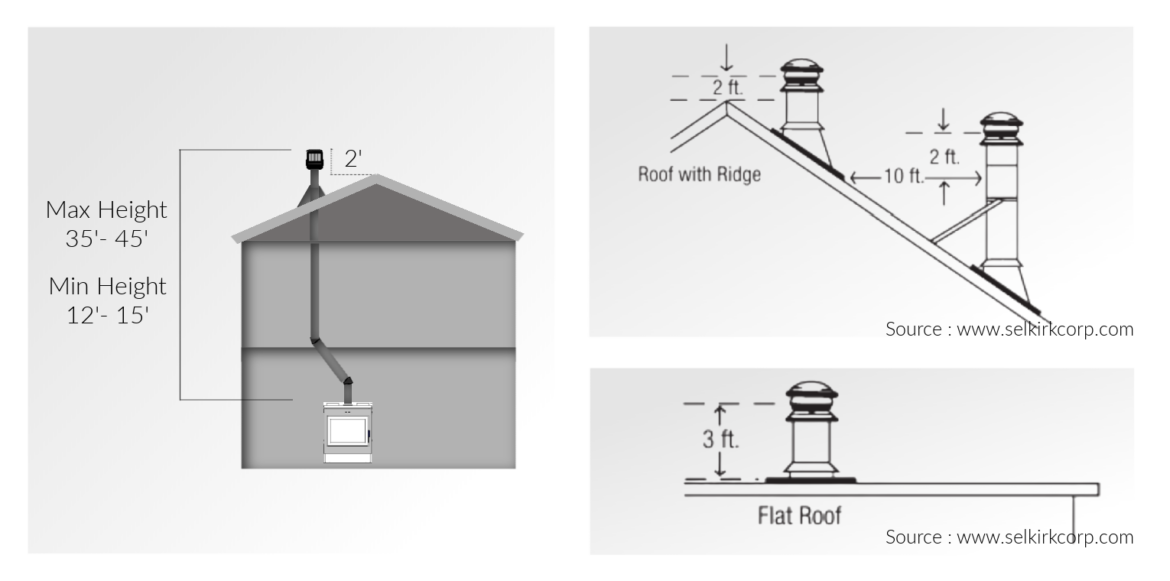 OPERATING THE FIREPLACE
OPERATING THE FIREPLACE
Operating a wood-burning fireplace is not particularly difficult. Make sure the damper is fully open. Using dry kindling and a few wads of newspapers, get small pieces of wood actively burning. Then, add slightly larger pieces to it, until a bed of coals starts to develop. Gradually add larger logs to the fire.
Once the fire and coal bed has been established, the air control for the fireplace is the means to adjust the amount of heat delivered to the room. More air, more heat and shorter burn times. Less air, less heat but longer burn times.
If you have an open burning fireplace with no control over the amount of air, you essentially have a campfire burning in your living room with an 8 or 10” hole (the chimney) through your roof. Unless you plan to use the fireplace only a time or two each year, give serious thought to an insert. With an insert, you will still be able to enjoy the flames and the ambience, but will realize significantly more heat and have a back-up to your conventional furnace.
A NEARBY RESOURCE:
Remember that your WE LOVE FIRE dealer is an expert with fireplace and chimney questions. Experienced and nationally certified trained professionals are ready to assist you with accurate information, service, and maintenance work or new installations.
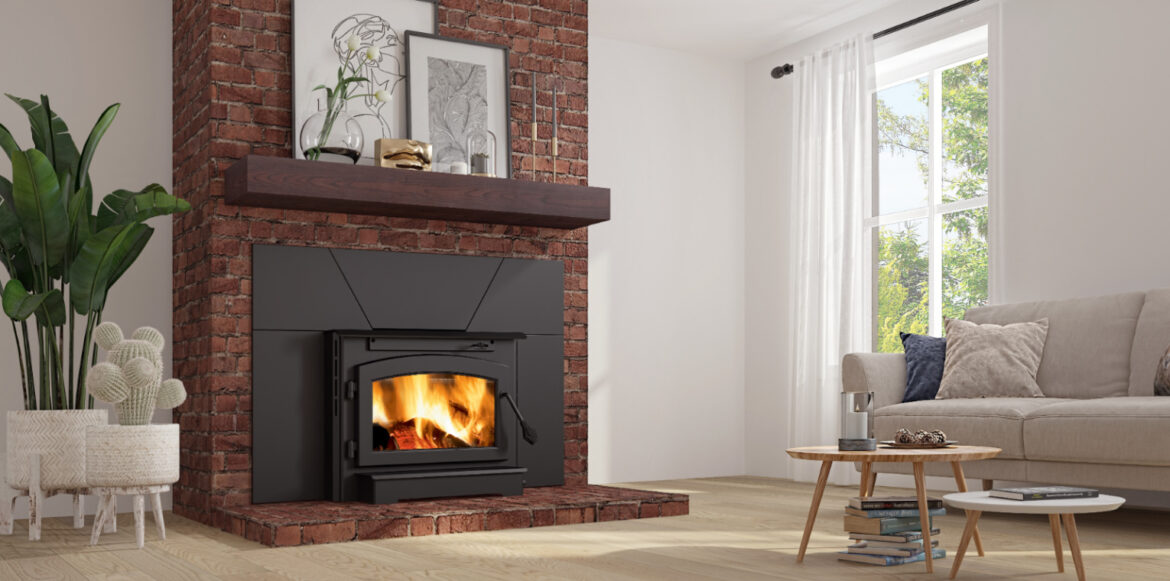
Insert Wood Fireplace Ambiance
